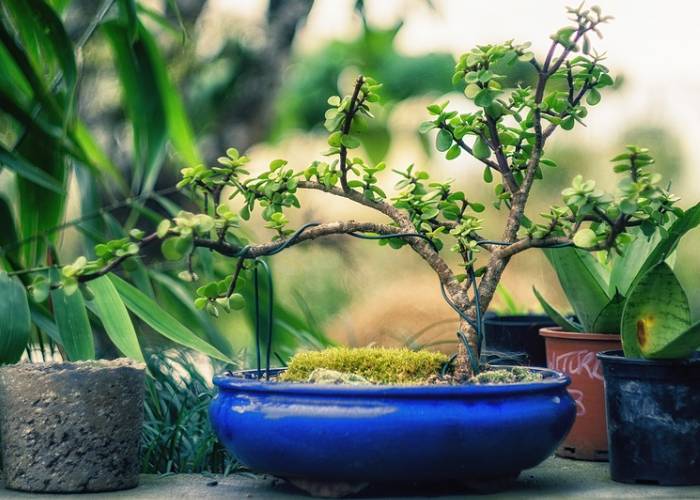Since the start of quarantine, people have been obsessed with plants. Growing a garden in the flat seems to be the new trend, and funky indoor planters are all the rage.

Tiktoks of succulent filled shelves, and IG stories with #plantparent have flooded the internet. Why? Perhaps it’s just another new and strange hobby that’s emerged from this pandemic. However, like learning how to make your own sourdough starter, indoor plants take time. They’re a living thing that needs to be nurtured. It’s a reminder of life and mother nature’s earthly peace amidst this anxious time.

Alternatively, houseplants could be filling the voids in our social lives. Either way, plants have made it into the homes of many, taking the place of loved ones that can’t be there. What encourages one to start a plant family? Where do you go to get plants? How do I make my plants not die? These are all valid questions.
Why should you buy indoor plants?
Well, we’ve addressed some reasons already, but what are the facts? Plants improve the air around us, improving our moods, and clearing our minds which lends a helping hand creatively. They disconnect us from technology, which is a much needed thing, especially since people have to rely on social media now more than ever to feel connected. Also, with all that time indoors it’s good to let something of the outside in.
Don’t let the plant experience be intimidating, because the internet has everything from plant care tips to even how to make your own planter out of an old football. Worst case scenario, if you think your plant is sick, you can download an app that uses your phone camera to scan plants and diagnose ailments. Youtube is also always a helpful tool not just for makeup tutorials, but for plant tutorials as well!
Here are some useful plant friendly apps that can help:
1) Planta
iPhone + Android: “Keep your plants alive” (Download from App Store / Download from Play Store)
Are your plants dying? Learn how to keep them alive with Planta. Get all the help you need to get impressive, thriving plants.
Includes: care reminders, step by step guides, plant recommendations – based on your skill, plant identification, discover plants for every corner of your home, all the info – just to be sure, plant journal.
2) Florish
iPhone: “Your plant care companion” (Download from App Store)
Florish is the complete indoor plant companion app, designed for those new to indoor gardening who may need help picking new plants for a space, or caring for the ones they already own. We are a new company and are looking for beta testers who want to stop killing their plants but don’t know where to start.
3) PlantHub
Android: “plant watering, house plant care, flower” (Download from Play Store)
PlantHub: plant watering, house plant care, flower is a house plant care app with a useful and simple interface. PlantHub can easily reminds plant watering periods and makes plant care easier. You can track plant watering periods. PlantHub: plant watering, house plant care, flower reminds you of plant watering with push notifications. It reduces the hassle of plant watering in your daily routine.

Looking to rediscover the great outdoors?
Use our Activity Explorer to find the best outdoor pursuits currently open around UK
Why indoor plants are worth it?
Even if you don’t think you have a green thumb, give it a try because the mental health benefits of caring for plants are significant! They are easy stress-busters, and force us to slow down and be mindful.
Talking to plants not only helps the plants, but if you’re feeling lonely it can really provide somewhat of a therapeutic feeling. You can even give it a name. Have you spoken to Jerry today?
Plants provide so much more than just a green aesthetic, they give you a sense of pride and accomplishment. There’s also a whole plant community where people talk about plants, share photos, and support each other! They not only can beautify a space, but they can bring joy and make you feel needed. No matter how small, they can give purpose. Even if you kill one, two, or even three plants, don’t give up! Try again to get it right, and each time you’ll come away having learned more and feeling as though you got something out of it. There’s bound to be a few casualties along the way, that doesn’t mean you’ll forever be a plant murderer!
Right now, it’s particularly painful being culturally and politically aware. Plants are neutral. They can offer a small sense of control. In other words, if you’re thinking about whether or not it’s worth it to buy a plant, it totally is! Self-growth is guaranteed when growing plants, go for it!
What types of indoor plants are there?
There are many indoor plants to choose from in your home, each with their own needs and living conditions. Look through these examples of common house plant types, or search through this online Plant Encyclopedia to learn more about each and find the best indoor plants for you.
- Amaryllis
- Kafir Lily
- Allamanda
- Star Jasmine
- Bougainvillea
- Passionflower
- Glory Bower or Bleeding Heart Vine
- Glory or Climbing Lily
- Natal Plum
- Gardenia
- Birds of Paradise Flower
- Flamingo Flower
- White Flag
- Chenille Plant
- Shrimp Plant
- Fuchsia
- Impatient or Buzzy Lizzie
- Wood Sorrel
Some house plants will become more readily available from florists and plant nurseries at seasonal times of the year. These particular indoor plants have become synonymous with certain holiday times such as Christmas and Easter, and having one of these plants in your home can add to your homes decorative spirit.
- Chrysanthemum
- Easter Lily or November Lily
- Cyclamen
- Hydrangea
- Fairy or Baby Promise
- English Primrose
- Calceolaria
- Cineraria
- Poinsettia
- Christmas Pepper or Ornamental Chilli
- Jerusalem Cherry
- Azalea
- Kalanchoe
Can be grown as flowering plants, foliage, bedding plants and as hanging baskets. Begonias come in many varieties and can be extremely variable in in forms. They can be long lasting and their needs not that difficult… which can make them perfect home plants.
- Rieger Elatior Begonias
- Begonia Semperflorens
- Tuberous Begonia
- Begonia X Rex
Originally native to South Africa, Germaniums love sunlight and ideally higher temperatures in most cases. Germaniums need water but only need to kept moist apposed to wet.
- Ivy-Leaved Geraniums
- Scented-Leaf Geraniums
- Fancy-Leaved Gernaiums
- Dwarf and Cactus-Flowered Gernaiums
The plants are a popular and easy to grow house plant. All are native to hotter climates, so therefore often require good sunlight exposure.
- African Violet
- The Magic Flower
- Lipstick Plant or Royal Red Bugler
- Gloxinia
- Goldfish Plant
- Temple Bells
- Kohleria
- Cardinal Flower
- Flame Violet
- Cape Primrose
Philodendrons are usually the most popular of foliage plants due to their tolerance for indoor conditions. Foliage plants also come in many forms and varieties suitable or home growing.
- Philodendron ‘Red Emerald’
- Heart Leaved Philodendron
- Panda Plant
- Elephant’s Ear
- Fancy-Leaved Caladium
- Peperomia
- Mind Your Own Business or Baby Tears
- Aluminium Plant
- Piggyback Plant
- Sensitive Plant
- Mosses-in-Cradle
- Classic Myrtle
- Prayer Plant
- Umbrella Plant
- Chinese Evergreen
- Southern Yew
- Variegated Mock Orange
- Ti Plant
- Zebra Plant
- Cast-Iron Plant
- Variegated Screw-Pine
- Tree Ivy
- False or Spider Aralia
- Hurricane
- Java Fig
- Rubber Plant
- Fiddle-Leaf Fig
- Dumb Cane
- Striped Dracaena
- Malaysian Dracaena
- Corn Plant
- Gold-Dust Dracaena
- Madagascar Dragon Tree
- Sander’s Dracaena or Ribbon Plant
- Umbrella Tree
- Norfolk Island Pine
- Ivy
- Cape Ivy
- Swedish Ivy
- German Ivy
- Spider Plant
- Grape Ivy
- Wandering Jew
- Mosaic Plant
- Coleus
- Wax Plant
- Rosary Vine
- Syngonium
- Devil’s Ivy
- Purple Passion Plant
- Kangaroo Vine
- Strawberry Geranium
Also forms of foliage plants, palms ideally need more space and good regular amount of heat.
- Coconut Palm
- Pigmy Date Palm
- Reed Palm
- Belmore Sentry Palm
- Lady Palm
Ferns unlike other house plants prefer more shaded conditions and want moderate temperatures and to be kept moist. There are many types of ferns however, and each have more varied requirements.
- Table Fern
- Mother Spleenwort
- Boston Fern
- Bird’s-Nest Fern
- Staghorn Fern
- Rabbit’s-Foot Fern
- Asparagus Fern
- Hare’s Foot Fern
- Maidenhair
- Holly or Fishtail Fern
- Silver Table Fern
The additional benefits of having fruit bearing plants in your home is the produce which is grown with it. Of course there are many kinds of fruit bearing plants, not all suitable for the indoors, and may require more stricter care and conditions then other house plants.
- Dwarf Pomegranate
- Calamondin Orange
- Avocado
- Pineapple
- Ponderosa Lemon
- Coffee
- Chinese Loquat
- Dwarf Banana
- Common Fig
There are hundreds of types of cactus and succulents available to purchase for your home. Cactus can usually be identified as harder and pricklier, while succulents although similar, are usually leafier and softer. Both require good air flow, lots of natural sunlight and not too much water.
- Snake Plant or Mother’s in Law Tongue
- Jade Plant
- Rice Cactus
- Crown-of-Thorns
- Night-Blooming Cereus
- Orchid Cactus
- Easter Cactus
- Thanksgiving or Crab Cactus
- Christmas or Crab’s Claw Cactus
Usually more difficult to grow indoors, especially for those new to plant parenting. However under careful conditions these can be grown successfully indoors and can be forced to flower in winter months as well.
- Tulip
- Hyacinth
- Grape Hyacinth
- Daffodil
- Lily-of-the-Valley
Buy something green, create your own sanctuary and visit one of these online UK plant retailers (they deliver!):

